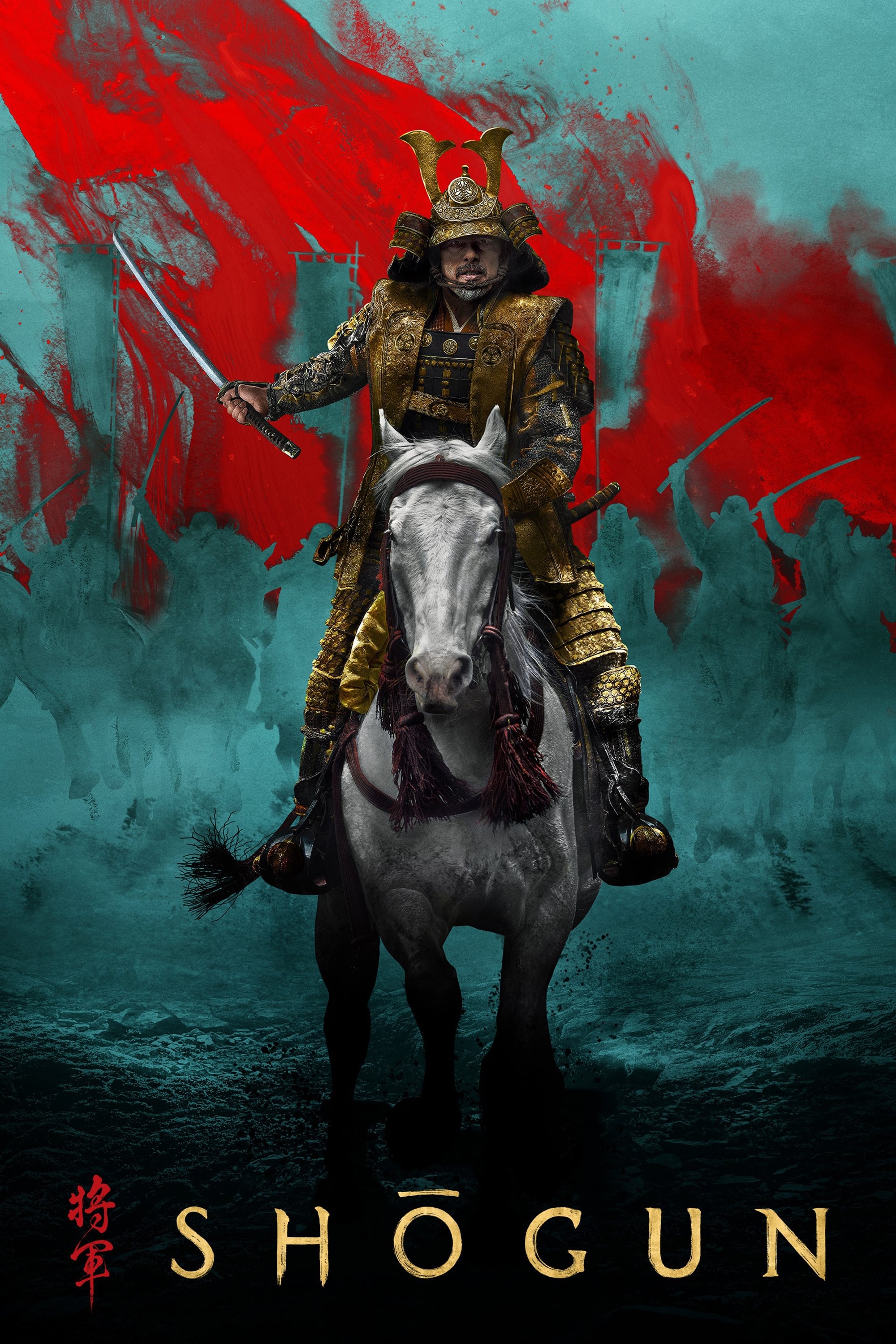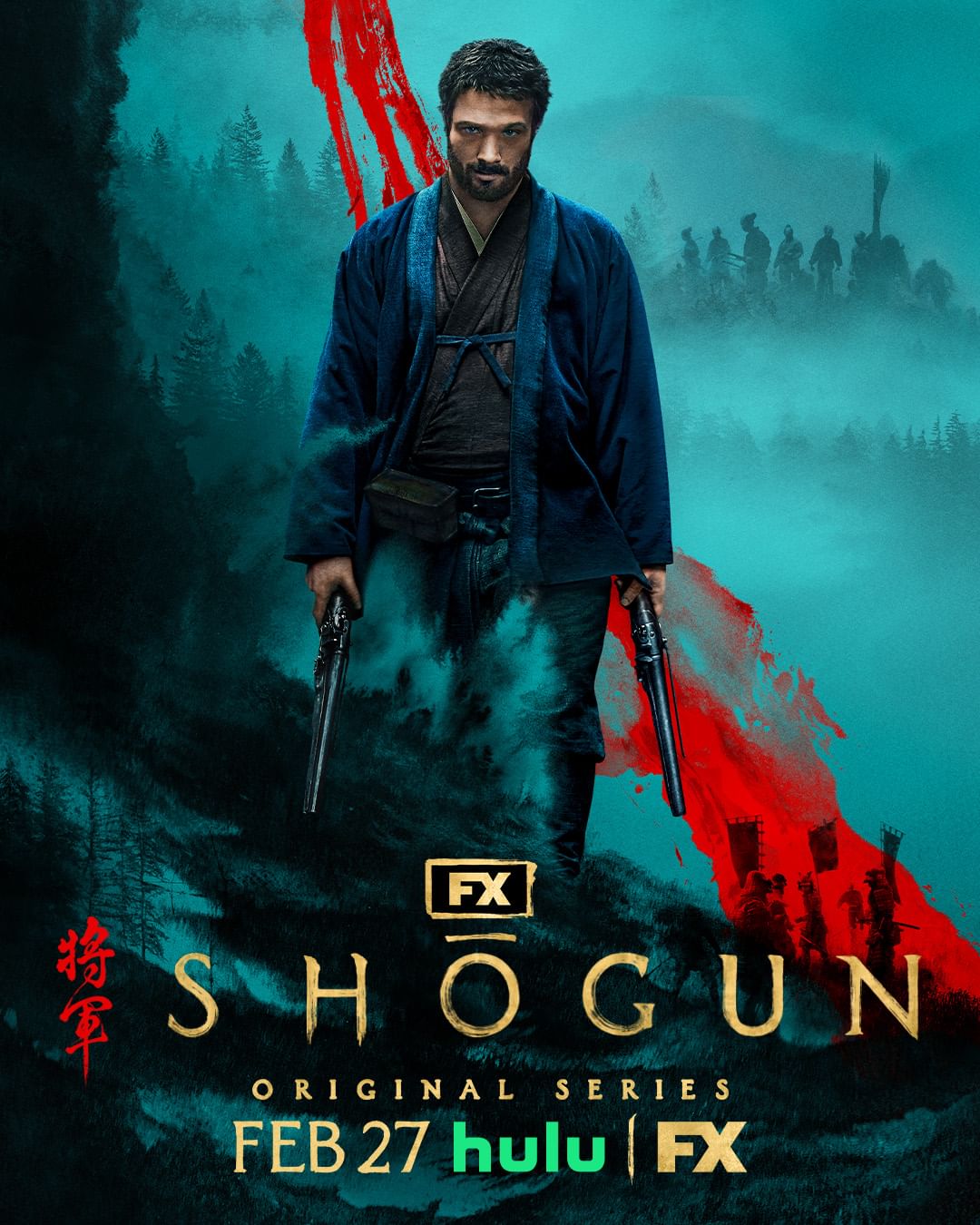Shōgun Television Show - A Deep Look At The Acclaimed Series
Table of Contents
- What Makes Shōgun Television Show a Must-See?
- Who Brings the Shōgun Television Show to Life?
- How Did the Shōgun Television Show Come to Be?
- What Kind of Acclaim Has the Shōgun Television Show Received?
- Exploring the Shōgun Television Show's Historical Roots
- The Legacy - Shōgun Television Show Across Generations
- A Glimpse Behind the Shōgun Television Show's Scenes
- Final Thoughts on the Shōgun Television Show
A new television story, based on a much-loved book, has truly captured the attention of many people lately, offering a sweeping look at a time long past. This particular series, you know, has been the subject of quite a bit of talk, drawing viewers into its detailed setting and the lives of its many interesting people. It seems to be one of those shows that truly sticks with you, prompting a good deal of discussion about its story and the way it presents history.
This fresh take on a classic tale, you might say, brings a world of old Japan right into our living rooms, with a story that feels both grand and very personal. It's almost as if the creators took great care to build a place that feels real, even though it’s a work of fiction. People are really connecting with the characters and the situations they face, which is, honestly, a pretty wonderful thing for a television production to achieve. It’s certainly something that gets folks talking around the water cooler, or perhaps online, about what they've just seen.
For those who enjoy tales of power, cultural clashes, and personal struggles set against a large historical backdrop, this show offers a truly rich viewing experience. It’s a story that, in some respects, has been told before, but this new version brings its own distinct feel and a fresh perspective to the familiar material. The way it has been put together, you know, has clearly made a big impact on a lot of people, making it a significant event in the current television landscape.
- Megan Ramsay
- Shirley Maclaine Filmography
- Movies With Tika Sumpter
- Dacre Montgomery
- Robinson Smokey Robinson
What Makes Shōgun Television Show a Must-See?
There are many reasons why this particular television offering has drawn so much positive attention and become something people feel they really ought to watch. For one thing, the sheer amount of time and effort put into bringing it to screens is quite something. It was, apparently, a project that took six years to get from the drawing board to its final showing, which suggests a deep commitment to getting every bit of it just right. That kind of dedication, you know, often shines through in the finished product, giving viewers something truly special to enjoy.
The tale itself, which forms the core of the Shōgun television show, is set in a very specific and interesting time in history, the close of the 16th century. This was a period in Japan known for its warring states, a time of great upheaval and change. While the story we see unfold is a made-up one, it is, in fact, built upon real historical events and circumstances, giving it a grounding that makes it feel authentic. This blend of actual history with an invented narrative allows for both grand storytelling and a sense of learning about a past era, which is, frankly, quite appealing to many viewers.
Some people, you know, might remember an earlier version of this story that was also a very popular television event in the 1970s and 1980s. That first telling was, basically, a huge cultural moment for its time, something that many parents or their friends probably watched or read. This new Shōgun television show, in a way, builds upon that earlier success, bringing the story to a fresh audience while also, perhaps, offering something new for those who loved the original. It’s interesting to see how a story can be reinterpreted across different periods, offering new insights each time.
Who Brings the Shōgun Television Show to Life?
The Faces of the Shōgun Television Show
The people who appear on screen are, truly, a big part of what makes any television production stand out, and the Shōgun television show is no different. You have actors like Hiroyuki Sanada, who brings a certain strength to his character, and Anna Sawai, whose portrayal of Mariko, it is said, was truly the heart of the entire series. Then there's Cosmo Jarvis, Tadanobu Asano, and Peter Bodnarus, all contributing their own distinct talents to the telling of this grand story. Each performer, you know, adds a layer of depth to the world being created, making the people in it feel very real.
The character of Mariko, as played by Anna Sawai, really seems to have left a lasting impression on those who watched the Shōgun television show. My text mentions that she was, essentially, the central emotional point of the whole offering, and that her character was, sadly, "lost" during the course of the story. This suggests a powerful and moving performance that resonated deeply with viewers, showing just how much a single person's story can affect the overall feeling of a series. It’s a testament to the actor's skill, and to the writing, that a character can become so important.
Beyond Mariko, there are other figures who have also captured the attention of the audience. Yabushige, for example, is highlighted in my text as one of the "best characters" in the Shōgun television show. This suggests a person who is, perhaps, complex, interesting, or just generally very well-written and performed. When a series has a collection of truly memorable people, it really helps to draw viewers in and keep them invested in what happens next. It’s a sign of a strong ensemble and a well-crafted narrative, honestly.
The Minds Behind the Shōgun Television Show
Behind every great television story are the individuals who first dreamed it up and then worked to make it a reality. For the Shōgun television show, my text points to Justin Marks and Rachel Kondo as the creators and also as directors. Their vision, you know, would have guided the entire project, from the initial ideas to the final scenes seen on screen. It’s a huge undertaking to bring such a detailed and large-scale story to life, and it requires a clear sense of purpose from those in charge.
Thinking about all the work that goes on behind the scenes for a production like this, it’s really quite something. My text mentions seeing "actors, directors, and more behind the scenes," which gives a little glimpse into the sheer number of people involved. From the writers shaping the script to the costume designers creating the period clothing, and the set builders constructing the environments, every single person plays a part. It’s a massive collaborative effort, you know, where countless hours are spent making sure every detail contributes to the overall effect of the Shōgun television show.
How Did the Shōgun Television Show Come to Be?
The path to getting a television series made can often be a long one, filled with many steps and, sometimes, a few pauses. For the Shōgun television show, my text indicates that there were "six years of development and production delays" before it finally arrived. This suggests a journey that was, perhaps, quite patient, with a lot of careful planning and likely some changes along the way. Such a long period of creation really speaks to the ambition of the project and the desire to produce something truly noteworthy for the audience to experience.
After all that time waiting in the wings, the Shōgun television show eventually made its grand entrance. My text tells us it "finally premiered on fx and hulu in late february." This means that after years of work and anticipation, the story was at last available for people to watch. The moment a show like this finally appears, you know, is a big one for everyone involved, from the people who created it to those who have been looking forward to seeing it. It marks the culmination of a considerable amount of effort and creative energy.
The fact that it premiered on both FX and Hulu also suggests a wide reach for the Shōgun television show, making it accessible to a good number of viewers. This kind of dual platform release is, in some respects, becoming more common, allowing a story to find its audience across different viewing habits. It’s a way to ensure that as many people as possible have the chance to experience the tale that has been so carefully crafted. This broad availability really helps a show gain momentum and become a topic of widespread conversation.
What Kind of Acclaim Has the Shōgun Television Show Received?
When a television series arrives with such a significant amount of build-up, people naturally wonder about how well it has been received. My text provides some truly striking information about the Shōgun television show's success, stating it "has won nineteen emmy awards, four golden globes, and four critics choice awards, among many other accolades." This is, basically, an incredible collection of honors for any production, suggesting a very high level of quality and widespread approval from those who give out such recognitions. It really speaks to the impact the series has made.
Beyond the specific awards, my text also describes the Shōgun television show as "the most talked about and awarded series." This phrase, you know, captures a sense of both critical praise and general public interest. When a show is both celebrated by industry groups and also a topic of everyday conversation, it means it has really broken through. It’s a sign that the story and its presentation have resonated with a broad spectrum of people, making it a truly notable event in the current entertainment scene.
The opinions of viewers themselves also paint a picture of strong reactions to the Shōgun television show. My text includes comments like "it’s such an great show" and mentions that some people "love it while you hate it," which suggests a powerful and perhaps even challenging viewing experience. When a show evokes such strong feelings, whether entirely positive or a mix of emotions, it usually means it has done something quite impactful. It’s a sign that the creators have succeeded in creating something that truly gets under people's skin, in a good way, prompting a lot of discussion and reflection.
Exploring the Shōgun Television Show's Historical Roots
The setting for any historical drama is, you know, a very important part of its appeal, and the Shōgun television show truly shines in this area. My text states that the story "takes place at the end of the 16th century," which immediately transports viewers to a distinct time in the past. This period is, in some respects, a fascinating one, full of political shifts and cultural changes, offering a rich background for the unfolding drama. It’s a time that feels both distant and, in a way, still relevant to human experiences.
Specifically, the series is set "in the aftermath of the warring states period," which was a time of great conflict and fragmentation in Japan. This historical context provides a very dynamic backdrop for the Shōgun television show, where power struggles and shifting loyalties would have been a daily reality. Understanding this period helps viewers appreciate the pressures and decisions faced by the people in the story, making their actions feel more meaningful. It’s a time of profound change, which is, basically, perfect for dramatic storytelling.
While the events we see on screen are part of a "fictional story," my text also makes it clear that it is "based on real events." This blend of invention and historical fact is a key element of the Shōgun television show's approach. It means that while the specific characters and their exact experiences might be made up, the broader historical forces and the cultural atmosphere are, essentially, authentic. This approach allows for creative freedom in storytelling while still giving viewers a sense of learning about a genuine historical period, which is, frankly, quite a clever way to present a tale.
The Legacy - Shōgun Television Show Across Generations
The story of Shōgun, it seems, has a history of its own, reaching back much further than this new television offering. My text points out that "people love shōgun and it was an enormous cultural phenomenon in the 70s and 80s." This indicates that the original book and its earlier television adaptation truly captured the public's imagination across a wide stretch of time. It was, basically, a story that many people connected with deeply, becoming a significant part of the popular culture of those decades. This long-standing affection for the material sets a high bar for any new version.
The lasting impact of the earlier Shōgun miniseries is also highlighted by my text, which mentions that "one of your parents, or some of their friends, has probably read it or seen the tv miniseries." This really brings home the idea that the story has been passed down, in a way, through different generations. It’s not just a new show; it’s a continuation of a story that has already touched many lives. This connection to the past gives the new Shōgun television show a certain weight and, perhaps, a sense of shared experience for families who might have known the original. It’s a pretty cool way for a story to endure.
This generational appeal means that the new Shōgun television show isn't just attracting fresh viewers, but also, potentially, bringing back those who have a fondness for the original material. It creates a bridge between different eras of television watching, where conversations about the new version can be compared and contrasted with memories of the old. This kind of enduring popularity, you know, is something quite special for any story, showing its ability to stay relevant and interesting over many years. It truly speaks to the strength of the underlying narrative and its ability to captivate audiences.
A Glimpse Behind the Shōgun Television Show's Scenes
For those who are curious about how television stories are put together, or who want to learn more about the people who create them, there are often resources available. My text mentions that one can "discover the cast and crew of shōgun on rotten tomatoes," which is a place many people go for information about films and television. This suggests that a lot of details about the Shōgun television show, including who was involved in its making, are openly available for anyone who wants to look a little deeper. It’s a good way to get a broader sense of the project.
Beyond just the names, my text also points out that you can "see actors, directors, and more behind the scenes." This implies that there's a chance to learn about the various roles and contributions that go into making a television series. It’s not just the faces you see on screen, but also the many creative minds and skilled hands working away from the camera. Getting a peek at these aspects of the Shōgun television show can really deepen one's appreciation for the final product, showing the immense effort required to craft such a detailed world for viewers.
The mention of "tv series details cast & crew" from February 27, 2024, in my text, suggests that information about the Shōgun television show was made available around its release. This kind of timely information helps people learn about the show as it comes out, allowing them to connect with the creators and performers right from the start. It’s a way for the production to introduce itself to the public, providing context and background for the story they are about to share. This transparency, you know, can really help build excitement and engagement with the audience.
Final Thoughts on the Shōgun Television Show
This discussion has touched upon several key aspects of the Shōgun television show, drawing directly from the information provided. We looked at what makes it a compelling watch, from its lengthy creation period to its blend of fictional storytelling with historical roots. We also considered the people who bring the story to life, both in front of and behind the camera, highlighting the significant contributions of actors like Anna Sawai and creators such as Justin Marks and Rachel Kondo. The show’s journey to the screen, including its premiere on FX and Hulu, was also noted.
Additionally, we explored the remarkable praise the Shōgun television show has received, including its impressive collection of awards and its status as a highly discussed series. The deep historical setting in late 16th-century Japan, particularly after the warring states period, was also a point of focus. Lastly, we considered the enduring legacy of the Shōgun story, noting how the new series connects with the original cultural phenomenon that captivated earlier generations, and how details about its making are shared for public interest.
- Clarissa Explains It All
- Pattie Mallette
- Doublemint Twins
- Lisa Dwan
- Cast Of La Palma Television Show

Shōgun (TV Series 2024- ) - Posters — The Movie Database (TMDB)

‘Shōgun’ Season 1: Everything We Know So Far Including The Release Date

Three New “Shōgun” Character Posters Released – What's On Disney Plus